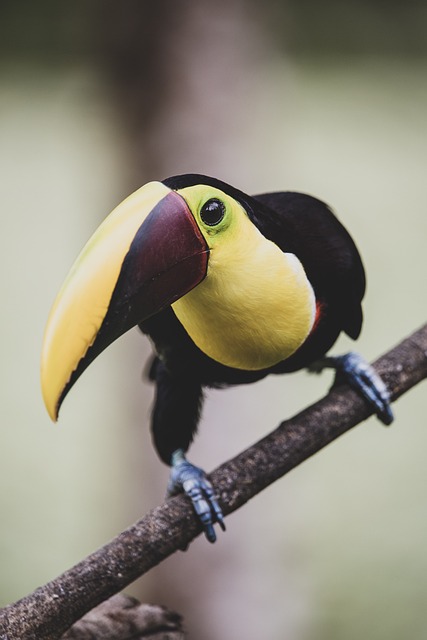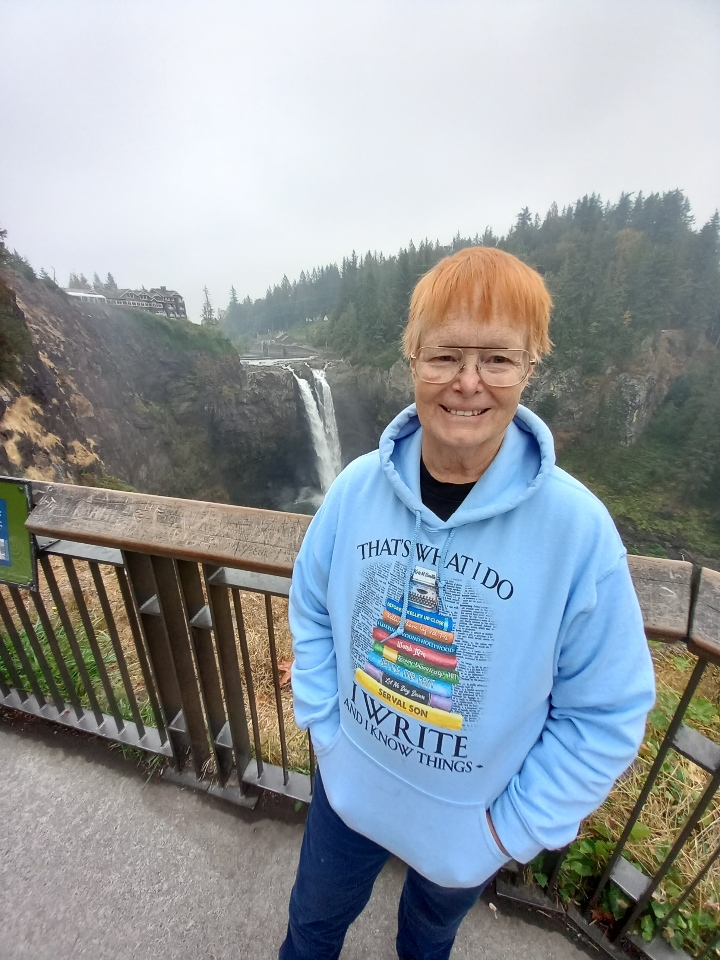There is sooo much good information coming in from Costa Rican residents Margaret Aliff, Bev Berry and Terry Young.
(Carolyn Kelley was right: “If you don’t ask, you don’t get!”)
I’ve joined several Costa Rica Facebook pages and reached out to their members to ask questions.
I’ve contacted Pet Lounger CR to ask pet import-related questions.
I’ve befriended friends-of-friends in Costa Rica to introduce myself and share my plans to move there in September 2025.
As a result, on the day I fly in, I won’t feel quite as much like a fish out of water as I would otherwise.
Where to Live? The FIRST Question!
I still haven’t decided where to locate first. I’d prefer the Lake Arenal area, but the medical offices there are limited and I haven’t been able to find out if the nearby largest town (Tilaran) has a kidney doctor and a clinic that can test my INR level every month. (If I can get a warfarin alternative down there for less, I would switch to that so I don’t have to get my blood tested so often.)
(Update: Tilaran clinic just got back to me saying they provide both of the medical services I need. WOO HOO! So Lake Arenal can go back on my “CR Landing Place Options” list!! My immigration coach Margaret Aliff says I just have to confirm that the clinic honors the caja system, too. I have an inquiry in to them to find out.)
If I move to Arenal, I will submit my residency application materials to CR Migracion in Liberia. I will need an appointment to do that.
If I move to San Jose, I will submit my residency app materials to CR Migracion in San Jose. No appointment is required to do that.
FLYING TO COSTA RICA: THE PROCESS
I will need a refundable round trip ticket (the return trip 180 days out) OR a bus ticket out of CR to Nicaragua for 180 days after I arrive in CR, although I won’t have to use either one as soon as my residency app materials have been submitted. At that time, I will get a “Golden Ticket” that allows me to stay in CR while the application goes through the process, which can take from six months to two years. After I’ve been a temporary resident for three years, I can become a permanent resident. I need to find out how soon after arrival or application date I can apply to the caja (health care) system. And in the interim, what do I do about health coverage? Cost? (See answer below from Terry Young.)
Additional info I’ve learned
Please Note: The info that follows came courtesy of this site: https://drinkteatravel.com/costa-rica-grocery-stores/
(I have truncated the information for ease of reference.)
Home delivery from WalMart (or PriceSmart, the Walmart local alternative) is available. A great many people don’t have vehicles and rely on public transit options, or shop locally within walking distance.(Pensionados as old as I am get free and/or reduced public transit, I hear, depending on carrier.)
High-end supermarket Auto Mercado
Middle-high range supermarkets: Mega Super, Super Compro, Perimercados, PriceSmart.
Budget supermarkets: Pequeno Mundo, and BM.
Small convenience stores commonly found in major cities: Vindi (a sister company of Auto Mercado), AM PM, and Fresh Market.
Each neighborhood also has its own small markets or mini markets for basic grocery food shopping.
Pali is the go-to for the cheapest prices.
Most grocery stores accept credit cards (and colones, of course).
Finding a membership warehouse club near you is key to finding the best prices.
Most Popular Costa Rica Grocery Stores
1. Mas x Menos
One of the largest chains in Costa Rica. Clean, well-organized, fully stocked with a decent selection of products. Fresh produce, meats, vegan and organic options. But prices may be higher compared to smaller-scale shops.
Where to Find Them:
Check their store locator here.
2. Auto Mercado Supermarket
Auto Mercado Premium supermarket chain, upscale shopping experience. clean, high-quality, and customer service is top-notch. More expensive compared to most supermarkets. If budget isn’t an issue, shop Auto Mercado.
On Wednesdays is “Dia del Campo” where many products go on sale for up to 50% off, or have 2 for 1 or 4 for 3 bundles.
Where to Find Them:
Check their store locator here.
3. Pali
Cheapest deals, shop at Pali, discount supermarket chain owned by Walmart. Most affordable prices and a basic selection of products. Limited variety of items,customer service isn’t the best. But if getting the lowest prices is top priority, go this route. Pali also has a bigger, full-service supermarket counterpart called Maxi Pali.
Where to Find Them:
Check the store locator here.
4. Maxi Pali
Warehouse-style discount store Low prices and bulk discounts on groceries, home goods, cleaning supplies, pet supplies, and clothes. Electronics, too. Some Maxi Palis have a pharmacy inside the store.
Where to Find Them:
Check the store locator here.
5. Supermercado Walmart
The Costa Rican branch of Walmart is essentially the same as the ones in America. Competitive prices, wide range of products: general merchandise, groceries, frozen food, clothing, home and garden, pet supplies, etc. Walmart has limited locations (just 14) in Costa Rica.
Where to Find Them:
Check their store locator here.
6. Local Organic Markets
Each town also has its own organic market. Good option for shopping local. Gluten-free items, fresh produce, and other organic products.
7. Mini markets
Small, basic markets. Limited selection of food, personal goods, produce. Tend to be overpriced and sometimes sell expired goods.
Farmers Markets in Costa Rica
Every region in Costa Rica has its own farmers market (feria). There are 80 ferias throughout Costa Rica, so there’s a fresh market close by. Local brands sell fresh fruit, fresh produce, dairy, poultry, ready-to-eat food, and other local delicacies at very good prices. Great alternative to grocery shopping in larger supermarkets, helps save money. Fresh produce with the same quality, or better, at significantly lower prices. Buying direct from farmers also supports the community.
Details depend on town, but typically, they occur Friday-to-Sunday. Here are a few popular Costa Rica farmer’s markets:
San Jose
- El Mercado Central, most popular farmer’s market since 1882. Produce, ready-to-eat meals: Costa Rican casados, homemade tortillas, empanadas, cheeses, and other delicacies.
Guanacaste
- Feria de Villa Real (outside Tamarindo) open daily. Great selection of fruit, local vegetables, dairy, and more.
- Feria La Paz, organic farmer’s market outside La Paz Community School. Open 3pm-6pm on Wednesdays.
Escazu
- Central Farmer’s Market Saturdays from 7am to 1pm outside San Miguel Church. Locally-grown fresh fruits and vegetables, local cheeses, meats, seafood, other Costa Rican staples.
Pharmacies in Costa Rica
Pharmacies (“farmacias”) are easy to spot, but not always in supermarkets. Only some stores (Walmart, Mas x Menos, and Maxi Pali) have their own pharmacy, but not all branches include them.
Every Costa Rican pharmacy is required to have a licensed pharmacist on site. They’re can assess common symptoms and recommend treatments on the spot.
Farmacias Fischel, preferred pharmacy, has stores in nearly every town in Costa Rica. Usually well stocked over-the-counter drugs, deodorant, shampoos, vitamins, etc.
Getting Around in Costa Rica without a personal vehicle can be super cheap!
Public Transport Costs in Costa Rica – Travel Guide
Update: Got the following information from Terry Young, an expat living in CR for years:
You cannot join the CAJA (the social medical system) until your residency application is GRANTED (not as soon as it’s applied for), which may be two years out. Question: Do I need to start paying into the caja system right away, or only after granted temporary pensionado residency? (No, only after you’re granted residency. See complete answer below.)
PriceSmart is NOT the “local alternative to Walmart.” PricesSmart is a membership only store (ie Costco) that sells only in bulk. I don’t shop at Pricesmart because living alone, I would never in a million years use any product in the quantity goods are packaged and sold there.
Free bus rides for 65+ plus are ONLY in combination with your DIMEX (residency identification card). You must show your card to the bus driver who records your Residency ID number. Question: Do I get a residency card (DIMEX) upon applying for pensionado residency, or can I get it before, or do I have to wait to be confirmed as a pensionado to get one? (No, DIMEX is the final step of the residency process. See below.)
Answers to above questions from Terry Young: The DIMEX is the final step of the residency process. You submit your complete application for residency (including apostilled birth certificate and police record) and wait. You might wait 6 months, you might wait two years, everyone has a different experience.
When it’s granted, (1) you must be fingerprinted, (2) you go to CCSS offices with documentation of your income and wait and the agent will return to tell you how much your monthly payment to the CAJA will be, then you must go to another office and make your first payment to the CAJA, and then you go to Correos de CR or BCR (bank) for your photograph and wait again. Finally, one day you receive an email that says that your DIMEX is ready to be picked up (in person). It’s only when your residency application is GRANTED that you receive your Costa Rican ID, called DIMEX. Once you have it, you can put your passport away. Until then, your passport (or a copy of the first page) must be with you every time you go out until your residency is granted, or you can get into big trouble.
Terry responded: “Never walk out your front door without ID. Before your have the DIMEX, that’s your passport. A paper copy (in color) of the photo page from your passport will suffice. If you are ever stopped for any reason without it, you are in trouble. Entry into national parks, government offices, etc also require passport or DIMEX.
“I will go one step further and tell you again how terrible the CAJA. It is crisis mode. Ask ANY expat if they use the CAJA and I bet upwards of 90% will tell you no. I would not depend on the public health system here which is in crisis. The talented doctors and technicians have left the system and gone private. The news reports more doctors leaving every day. Which creates the biggest problem and that’s the wait time to receive treatment for anything. There’s a saying on the street that goes something like, “If you ever receive a diagnosis of cancer, you have received your death sentence because you will never get treated by the CAJA before you die.” I am talking about YEARS for treatment. Yes, you save money by dropping plan B of Medicare but you are taking a tremendous risk. If I ever received diagnosis of cancer I know I can catch a flight to the United States and receive proper treatment paid for by the US government.
More on Buses …. The difference between Costa Rica (San Jose) and large cities in North America, Europe, etc. is that the bus system is not government-owned or operated. So, there is no “Metro” with published schedules. Each route is owned by a different private bus company. You are on your own to do your homework – online and on foot – to figure out your itinerary.
Terry wrote: I have been in San Jose for 5 years and I am still learning the routes. Last week, I wanted to go from San Jose to San Antonio de Escazú and knew that the stop to board the bus was somewhere around the Coca-Cola area. I asked 4 different people (including bus drivers) and got 4 different answers. I finally asked for help from two policemen; I followed them around for 15 minutes as they spoke with drivers of different buses until they found the bus stop for San Antonio for me.
There are tools that help. There are two Apps that you can download from Google Play: “Moovit” and “Yo Viajo.” Additionally, there are websites: centrocoasting.com, visitcostarica.com, thebusschedule.com, thebusincostarica.com.
Good luck. Let me know if you have specific questions regarding any specific route or other questions about using the buses in CR.
The neighborhood markets you describe are called “pulperías.” Each town does not have an organic market, only very few in largest cities. I know of only one in all of San Jose.
Why is Farmacia Fischel preferred? That might be the last pharmacy I would choose.
In a nutshell (from Terry Young) re Health care in CR:
“Before you have residency here, you are on your own for healthcare costs. But, out-of-pocket expenses for a doctor’s visit here (with no insurance) is considerably less than a comparable visit in the US.
Many folks purchase private health insurance for health coverage. There are various agents and private insurance companies. I do not know costs as I have never explored this option.
Many folks join MediSmart, which is a private entity, modeled after an HMO. Membership cost is low, less than $20/month. You must use MediSmart doctors, but every speciality of medical practice is available. The cost of seeing a MediSmart doctor is much lower than paying out-of-pocket to other private CR physicians, 50-60% less if not more. And the care is much better than public health doctors, top-notch physicians.
MediSmart provides a 50% discount on the first two days of the cost of a private room in a private hospital (Metropolitano). There are no other hospitalization benefits available with MediSmart.
There are both private and public hospitals in CR. Quality of care in a private hospital is much better than in a public hospital.
If you chose to seek residency in CR, then you MUST join the CAJA, the “social medical system,” a requirement by law. Furthermore, you must pay a monthly premium into the CAJA, the amount of the monthly payment determined or based upon your income, calculated by some mysterious formula. Once you are in the CAJA, all medical expenses by public doctors and in public hospitals are at no cost.
In most every barrio or neighborhood in the San Jose General Metropolitan Area (GAM), and in cities across the country, there is a local CAJA clinic called the EBAIS, staffed with one or two general practitioners and nurses. Typically, that’s where you enter the system locally to begin to receive care in the CAJA. There are no costs for visits or for prescriptions (other than your monthly premium of course).
But all is not roses with the CAJA. Often, care or any procedure is difficult to schedule because the waiting list is long. It is a national crisis, frequently in the news. I read recently that the longest wait time currently for any elective procedure is for orthopedics, such as knee surgery … 3 years! Another recent article said that wait time to see ANY specialist is now over s year CAJA system. A day in a public hospital is an”ordeal” at times, with crowds and long lines
Two caveats: (1) the CAJA is good for obtaining prescriptions at no cost and lab tests (although wait time for tests can be long. In May, my MediSmart doctor advised that I get a chest x-ray, which I chose to do through the CAJA to save costs; my x-ray appointment is January 2025, the first available time); (2) the CAJA is good for emergencies, emergency room treatment is immediate and good.
So, here is how I have managed healthcare personally: (1) I am resident, but I use the CAJA only for emergencies (I have had two), for lab tests and regular non-complicated monthly prescriptions. (2) I joined MediSmart and go to MediSmart to “see the doctor,” I have a General Practitioner that I see regularly ($26 per visit) and have occasionally seen MediSmart specialists, all top quality and at relatively low cost, (3) I maintain my Medicare (Social Security) in the United States and will return to the US for major treatment, staying with my daughter and family. In 2019, I needed heart bypass surgery and returned to San Antonio for the surgery and recovered for months at my daughter’s home until I was ready to return to Costa Rica.
Others have different strategies using combinations of private insurance, MediSmart, the public health system or CAJA, and returning to your home country for major conditions.”
(c) Terry Young, 2024.




